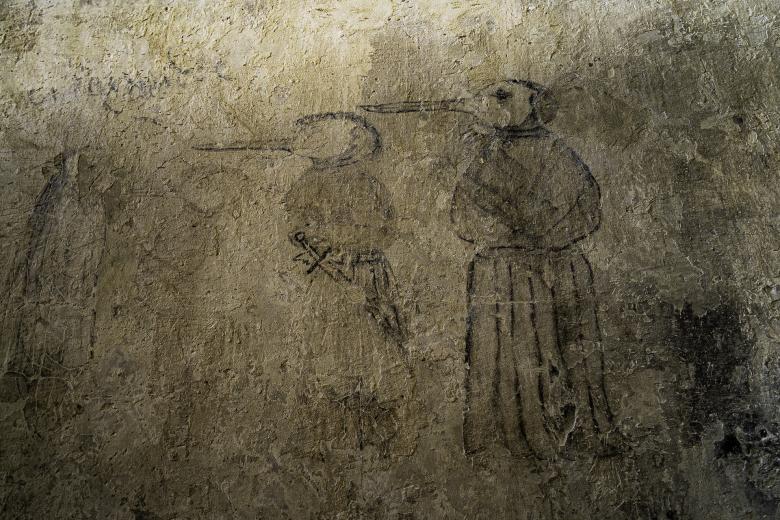Legal science through the lens of fairy tales
Fairy tales, when understood as manuals of behaviour that are shared within the household, can serve as a means to study and understand the law at a specific time and space. This claim is not new. The Grimm Brothers, the renowned scholars Friedrich C. von Savigny (1779-1861) and John H. Wigmore (1863-1943), and many others have already endorsed this idea for centuries.
Jacob (1785-1863) and Wilhelm (1786-1859) Grimm interacted closely with Savigny. They attended his law classes at university, joined him in journeys, and corresponded extensively. Their letters show a shared interest in fairy tales as a means to encapsulate rules for society. After all, fairy tales can act as mirrors of legal rules.
Law is omnipresent in fairy tales, since it is omnipresent in society. The Grimm Brothers were members of the historical school of legal science that included Savigny as one of its main exponents. They were members of the Germanic branch of that school, and their fairy tales were building blocks in their efforts to trace local rules. The Grimm Brothers presented readers with a set of rules of behaviour. Their accounts taught readers what ought to be done or avoided in a specific situation. These rules were read to children, but in doing so were also reiterated to parents. Everyone was confronted with the rules and with the consequence of not following the rules. Accounts tended to depict common places or events, hence offering additional points of contact for the readers. The prescriptive parts of rules were clearly present when readers encountered passages such as “you ought not to depart from the beaten path in the woods”, “you ought not to open the door to strangers”, or the omnipresent “you ought not to break your promises.” Children grew up in households that were made aware of those rules. They were reminded of rules each time they listened to a fairy tale. Fairy tales, such as the ones collected by the Grimm Brothers, would therefore turn into manuals of household behaviour, serving as tools to convey and teach the underlying rules.
Hansel and Gretel encapsulates a number of rules, for example. The most prominent rule, being a pillar of society, relates to the respect for authority. Hansel and Gretel do not conceive of the possibility of challenging the authority of their parents. The authority, be it parents in the household, the law giver in civil society, or God in spiritual life, was not to be challenged. Society was built on that equilibrium, and many rules derived from that basic assumption. This fairy tale aids in seeing, as if through a lens, the different legal actors in society, and equally importantly, their roles.
Little Red Riding Hood offers a prime example of the omnipresence of the law. The woods are the place where danger is present, and where the unexpected occurs. In the woods, outlaws lived and evil things happened. Little Red Riding Hood’s walk through the woods epitomizes the danger in the woods, and highlights the social rule that “you ought not to depart from the beaten path in the woods.” In fact, from a legal standpoint, the woods came to be equated with the legal concept of “civil death”. This was a legal sentence applied to people convicted of certain crimes, who were then legally banished from society, forced to live at its margins. Often those margins left them with only the woods as a place to live out their sentences.
The Wolf and the Seven Young Goats shows the negative consequences of departing from or breaching a promise. The door ought not to be opened to strangers, and that was a promise to be kept. The adage pacta sunt servanda (agreements must be honoured) shaped legal science during the past centuries. Its origins can be traced back to Roman times, while later studies by canonists and moral theologians also found antecedents in the Bible. The adage ultimately gained a place in custom and codes alike, across Europe. It is present in several stories of the Grimm Brothers. It indeed percolated into daily life.
Fairy tales invite everyone to be curious about the law and to look outside their comfort zones. They offer a catalogue of life characters and of rules. The study of fairy tales, from a legal perspective, is a manifestation of law and popular culture. Indeed, law is omnipresent in popular culture, and fairy tales are no exception. Fairy tales depict life in society and can encapsulate the rules that act as framework for the resulting behaviours. These accounts are often transmitted across generations, offering common understandings of how to interact in a specific situation and in a specific society. Accounts, such as fairy tales, can act as mirrors of society and of legal rules.
| For more information on the interaction between legal science and fairy tales, visit: Onceuponalaw.org - More blogs on Law Blogs Maastricht |
A. Parise
Agustín Parise (Buenos Aires, Argentina) is Associate Professor of Law at the Faculty of Law of Maastricht University. He received his degrees of LL.B. (abogado) and LL.D. (doctor en derecho) at Universidad de Buenos Aires (Argentina), where he was Lecturer in Legal History during 2001-2005. He received his degree of LL.M. at Louisiana State University Law Center (USA), where he was Research Associate at the Center of Civil Law Studies during 2006-2010.

-
Defoe, Covid-19, and resilience of law and society
Historical novels offer a place to outreach for other legal systems, providing laboratories to study and understand law and society. There is especial value in revisiting historical novels that depict law and society, especially in these days of Covid-19. Such is the case of the novel by Daniel...

-
An open laboratory for characters and scenarios!
The Law and Literature (L&L) movement gained momentum in Europe during the past decades, having had so far more exposure on the other side of the Atlantic Ocean. L&L offers an open laboratory to create and test knowledge, and the teaching of law should benefit from the genius and creativity of...
